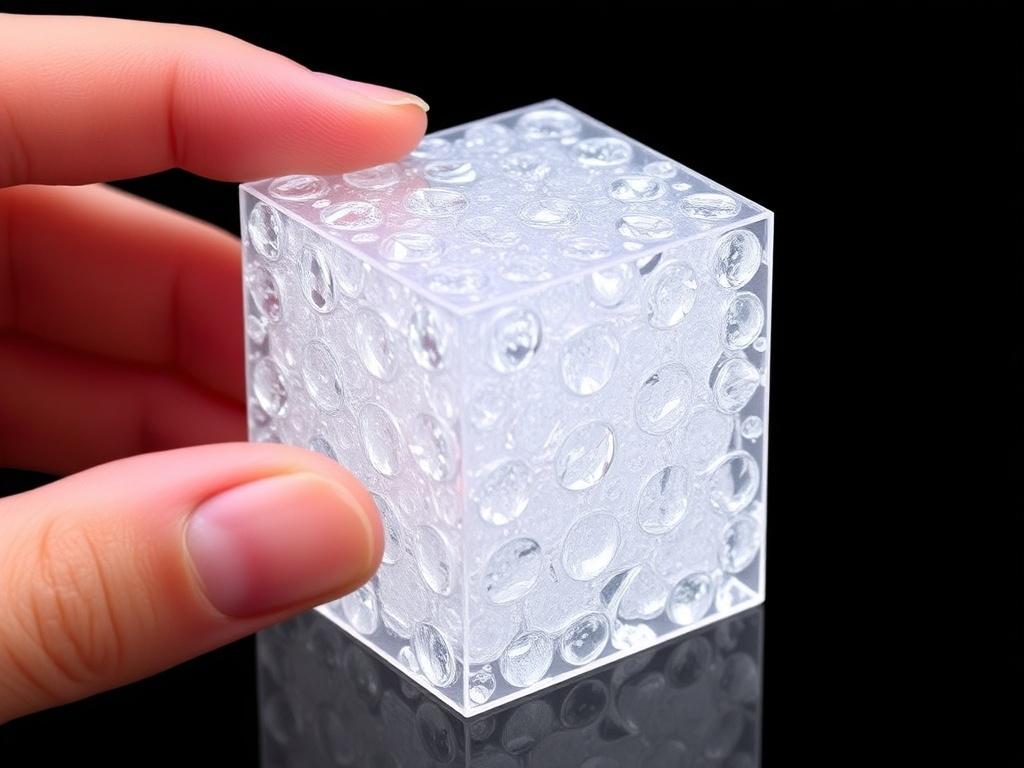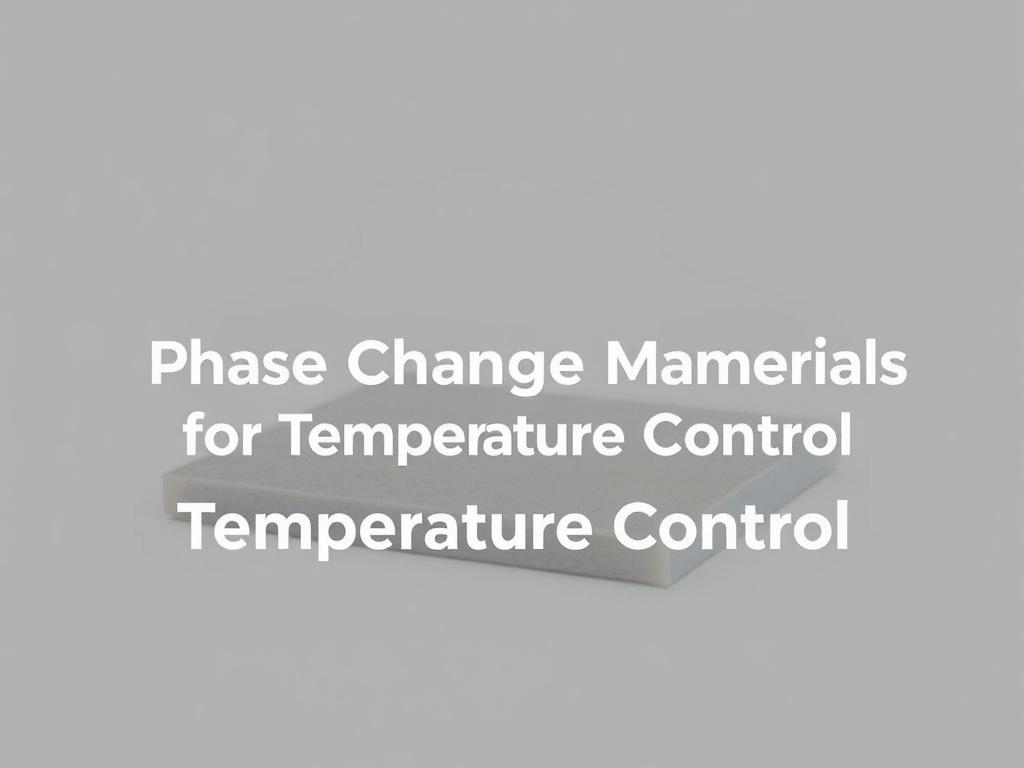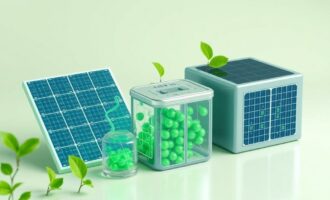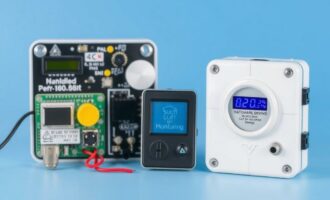- What Are Phase Change Materials?
- How Do Phase Change Materials Work?
- Key Properties of PCMs
- Types of Phase Change Materials
- Applications of Phase Change Materials for Temperature Control
- 1. Building and Construction
- 2. Electronics and Battery Thermal Management
- 3. Textile and Wearable Technology
- 4. Food Storage and Transportation
- 5. Healthcare and Pharmaceuticals
- Summary of Key PCM Applications
- Advantages of Using Phase Change Materials for Temperature Control
- Challenges and Considerations in Using Phase Change Materials
- 1. Thermal Conductivity
- 2. Phase Segregation and Supercooling
- 3. Material Compatibility and Stability
- 4. Cost and Availability
- Future Trends in Phase Change Materials for Temperature Control
- Tips for Choosing the Right PCM for Your Temperature Control Needs
- Conclusion
In today’s rapidly evolving world, effective temperature control is no longer a luxury but a necessity across many industries, from electronics to construction, healthcare to textiles. One fascinating innovation making waves in this arena is the use of Phase Change Materials (PCMs) for temperature control. These materials offer an elegant, energy-efficient way to regulate temperature by absorbing, storing, and releasing thermal energy during phase transitions. If you’ve ever wondered how we can manage heat more sustainably or enhance comfort without bulky cooling devices, PCMs could be the answer.
In this article, we will explore the science behind phase change materials, their types, applications, and how they help us maintain optimal temperatures in diverse settings. Whether you’re a student, a professional, or just curious about smart thermal management, this guide will provide you with a thorough understanding of how PCMs function and why they’re gaining momentum as a sustainable solution.
What Are Phase Change Materials?

Phase Change Materials are substances that absorb or release significant amounts of latent heat when they change their physical state—usually from solid to liquid or liquid to solid—at a specific temperature. This process occurs without a change in temperature during the transition, which makes PCMs particularly effective for temperature control.
Think of ice melting into water; the ice absorbs heat but stays at 0°C until it’s completely melted. Similarly, PCMs are engineered to melt and solidify at temperatures suitable for various applications, thereby stabilizing the surrounding environment by buffering temperature fluctuations.
How Do Phase Change Materials Work?
The latent heat absorbed and released during the phase change acts as a thermal reservoir. When the environment warms up, the PCM melts and stores excess heat. When the temperature drops, the PCM solidifies and releases stored heat to maintain a stable temperature. This thermal regulation can reduce the need for traditional heating and cooling, leading to energy savings and enhanced comfort.
Key Properties of PCMs
Not all PCMs are created equal. For effective temperature control, PCMs should exhibit the following characteristics:
- Melting point aligned with the desired temperature control range
- High latent heat storage capacity
- Good thermal conductivity to facilitate heat transfer
- Chemical stability over many cycles
- Non-toxic and safe to handle
- Cost-effectiveness and availability
Types of Phase Change Materials
Phase Change Materials come in various forms, each with their own advantages and suitability depending on the application. Primarily, they are categorized into three groups:
| Type of PCM | Description | Examples | Advantages | Limitations |
|---|---|---|---|---|
| Organic PCMs | Derived from carbon-based compounds, such as paraffins and fatty acids. | Paraffin wax, stearic acid, capric acid. | Non-corrosive, chemically stable, wide melting point range. | Lower thermal conductivity, flammability concerns. |
| Inorganic PCMs | Salt hydrates and metallic alloys fall under this group. | Calcium chloride hexahydrate, sodium sulfate decahydrate. | High latent heat storage, higher thermal conductivity. | Potential phase segregation, supercooling, corrosion issues. |
| Eutectic PCMs | Mixtures of two or more components which melt and solidify at a single, sharp temperature. | Mixtures of salt hydrates or organic compounds. | Parameterized melting points, customizable. | Complex formulation and stability challenges. |
Applications of Phase Change Materials for Temperature Control

The versatility of phase change materials for temperature control has led to their adoption in many sectors. Let’s delve into some of the most prominent applications illustrating how PCMs contribute to smarter thermal management.
1. Building and Construction
One of the most promising uses of PCMs lies in enhancing energy efficiency in buildings. Integrating PCMs into walls, ceilings, or floors allows the building to absorb excess heat during the day, reducing the need for air conditioning, and release stored heat during cooler nights, lowering heating requirements.
This passive temperature control mechanism can significantly decrease energy consumption, improve indoor comfort, and reduce carbon footprints. Some modern construction materials embed microencapsulated PCMs, which maintain their functionality over thousands of heating and cooling cycles without leakage.
2. Electronics and Battery Thermal Management
Heat is a major enemy of electronic devices and batteries, adversely affecting performance and lifespan. PCMs are increasingly used in thermal regulation systems for laptops, smartphones, and electric vehicle batteries. They absorb sudden surges in heat from device operation and dissipate it slowly, preventing overheating.
This kind of temperature control improves reliability and safety without bulky heat sinks or active cooling mechanisms, making devices lighter and more compact.
3. Textile and Wearable Technology
Imagine clothing that keeps you cool in summer and warm in winter without bulky layers. PCM-infused fabrics achieve exactly this by storing excess body heat and releasing it when temperatures drop. This temperature control can extend to outdoor gear, sportswear, and even medical textiles designed to maintain patient comfort.
Phase change materials for temperature control in textiles are often microencapsulated to integrate seamlessly with fibers and withstand washing or wear.
4. Food Storage and Transportation
Maintaining the cold chain during food storage and transportation is crucial for preventing spoilage. PCMs can be used in insulated packaging or containers to keep perishable goods at a steady temperature. This passive temperature control extends shelf life and reduces dependency on active refrigeration.
5. Healthcare and Pharmaceuticals
In healthcare settings, many medications and vaccines require strict temperature control. PCMs incorporated into transport containers and packaging solutions provide reliable temperature buffering, ensuring that pharmaceuticals remain viable during transit or storage.
Summary of Key PCM Applications
| Application | Temperature Control Benefits | Common PCM Types Used |
|---|---|---|
| Building and Construction | Reduces HVAC energy, improves comfort, stabilizes indoor climate | Paraffins, salt hydrates |
| Electronics and Batteries | Prevents overheating, extends device life | Organic PCMs, eutectics |
| Textiles and Wearables | Maintains personal thermal comfort, lightweight | Microencapsulated organic PCMs |
| Food Storage and Transportation | Maintains cold chain, prevents spoilage | Salt hydrates, eutectics |
| Healthcare and Pharmaceuticals | Protects temperature-sensitive products during transit | Microencapsulated PCMs, salt hydrates |
Advantages of Using Phase Change Materials for Temperature Control
Why are PCMs becoming such a focal point in temperature control technologies? The answer lies in their unique ability to regulate temperature passively and efficiently. Let’s break down some of the compelling benefits of integrating PCMs for thermal management:
- Energy Efficiency: PCMs reduce reliance on traditional HVAC systems or active cooling by absorbing and releasing heat as needed, leading to significant energy savings.
- Thermal Stability: They reduce temperature swings, contributing to more stable and comfortable environments or functioning devices.
- Compact and Lightweight: Unlike bulky heat sinks or cooling devices, PCMs can be embedded into materials or products without adding excessive weight or volume.
- Environmental Sustainability: With the potential to reduce energy consumption and carbon footprints, PCMs support green building standards and eco-friendly technology designs.
- Cost Savings Over Time: Although initial investment might be higher, reduced energy bills and extended lifespan of products or buildings can offset these costs.
Challenges and Considerations in Using Phase Change Materials
While PCMs offer exciting opportunities, they are not without challenges. When selecting and implementing PCMs for temperature control, several factors must be carefully considered to avoid pitfalls:
1. Thermal Conductivity
One common limitation is the relatively low thermal conductivity of many PCMs, particularly organic ones. This can slow heat transfer rates, limiting efficiency. To overcome this, composites or additives like graphite and metal particles are sometimes used to enhance conductivity.
2. Phase Segregation and Supercooling
In some inorganic PCMs, repeated melting and solidification can cause components to separate (phase segregation), reducing effectiveness over time. Supercooling—where the PCM remains in liquid form below its freezing point—can also impair heat release.
3. Material Compatibility and Stability
PCMs must be chemically stable and compatible with containment materials to prevent corrosion or leakage. This is especially critical when PCMs are integrated within construction materials or electronic housings.
4. Cost and Availability
Although prices are falling as technology advances, some PCMs can be costly or difficult to source on a large scale, which hampers widespread adoption.
Future Trends in Phase Change Materials for Temperature Control
The field of phase change materials is dynamic with ongoing research focusing on optimizing performance, sustainability, and broader usage. Some emerging trends include:
- Nano-enhanced PCMs: Using nanoparticles to improve thermal conductivity and stability.
- Bio-based PCMs: Development of organic PCMs derived from renewable resources to boost sustainability.
- Smart Homes and IoT Integration: PCMs coupled with sensors and control systems for dynamic thermal management.
- Expanded Application Fields: Innovative uses in aerospace, automotive, and wearable medical devices.
Tips for Choosing the Right PCM for Your Temperature Control Needs
When considering PCMs for specific projects or products, evaluating key parameters is crucial to ensure effectiveness and longevity. Here are some practical tips to guide selection:
- Identify the Target Temperature Range: Select a PCM with a melting point close to the desired control temperature.
- Assess Thermal Storage Capacity: Higher latent heat means more efficient heat absorption and release.
- Evaluate Cycling Stability: Look for PCMs with proven durability over many phase change cycles.
- Consider Safety and Environmental Impact: Non-toxic and eco-friendly options are preferable.
- Determine Form Factor Compatibility: Choose microencapsulated or bulk PCMs based on integration method and application.
- Analyze Cost vs. Benefit: Balance upfront cost against long-term energy savings and maintenance needs.
Conclusion
Phase Change Materials for temperature control represent a transformative technology that marries scientific ingenuity with everyday practicality. By harnessing the power of latent heat during phase transitions, PCMs provide an innovative, energy-saving approach to managing thermal fluctuations across diverse applications—from green buildings and wearable tech to sensitive electronics and pharmaceuticals. Although there are challenges in material properties and cost, ongoing advancements are steadily overcoming these hurdles, pushing PCMs toward more mainstream use. For anyone interested in sustainable, efficient thermal regulation, understanding and leveraging phase change materials could be a game-changer for the future of smart temperature control.
Как вам статья?







